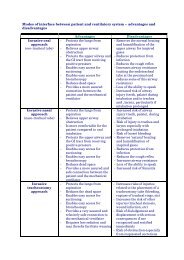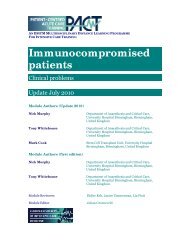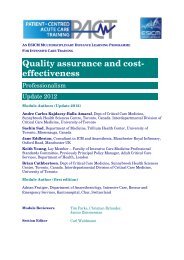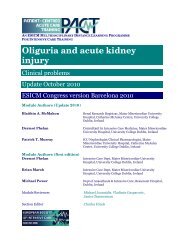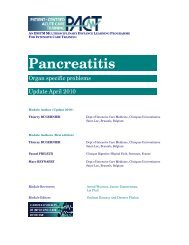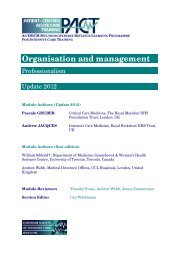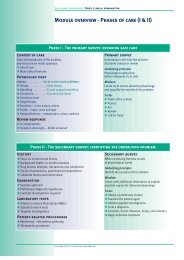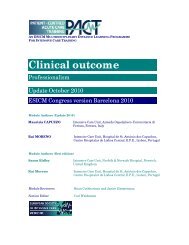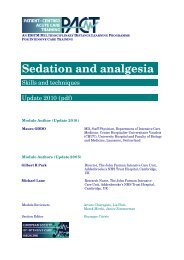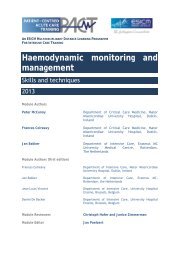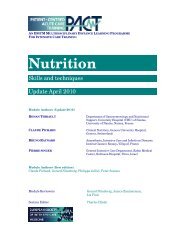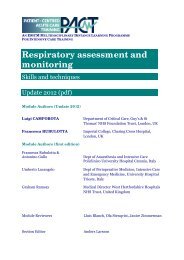Burns injury - PACT - ESICM
Burns injury - PACT - ESICM
Burns injury - PACT - ESICM
You also want an ePaper? Increase the reach of your titles
YUMPU automatically turns print PDFs into web optimized ePapers that Google loves.
Q. If bleeding continues despite an absence of a surgical bleeding site, what is the<br />
approach?<br />
A. Check platelet and coagulation indices (in the aftermath of a substantial fluid/blood<br />
transfusion) and prescribe therapy (usually fresh frozen plasma and platelets) as indicated.<br />
Old hydroxyethyl starch HES solutions are associated with long lasting<br />
pruritus.<br />
After surgery she is hypothermic and hypotensive, but after some hours of fluid<br />
management she stabilises. On day four, temperature approaches 40 C, CRP is 300 mg/L<br />
and PCT is 10 µg/L. Blood pressure is normal. PaO 2 /FiO 2 ratio is declining (20 kPa).<br />
Q. Sepsis is the apparent cause of this deterioration. What is the likely aetiology?<br />
A. In view of her deteriorating respiratory state, a pulmonary source is likely but, in<br />
patients with thermal injuries, a wound infection is always a possibility. Differentiation<br />
will require clinical evaluation.<br />
Sepsis<br />
Burn wound infection<br />
Respiratory infection<br />
Q. In your search for the source of infection, what will be the target(s) of your clinical<br />
evaluation?<br />
A. The search for a source of sepsis will include: respiratory and urinary systems; operative<br />
site, (in this case extensive burn wounds); indwelling catheters including CVC access and<br />
arterial access and other bloodstream infections (including cardiac valves). Other<br />
possibilities are acalculous cholecystitis, Clostridium difficile infection (particularly if the<br />
patient has been on antibiotics and/or has diarrhoea), sinusitis, otitis media, and decubitus<br />
ulcers.<br />
If, on clinical examination there is no other evident source for the sepsis, and<br />
CRI (catheter-related infection) is suspected, the CVC, arterial catheter or other<br />
intravascular device is removed or changed (and catheter tip and blood cultured).<br />
54



